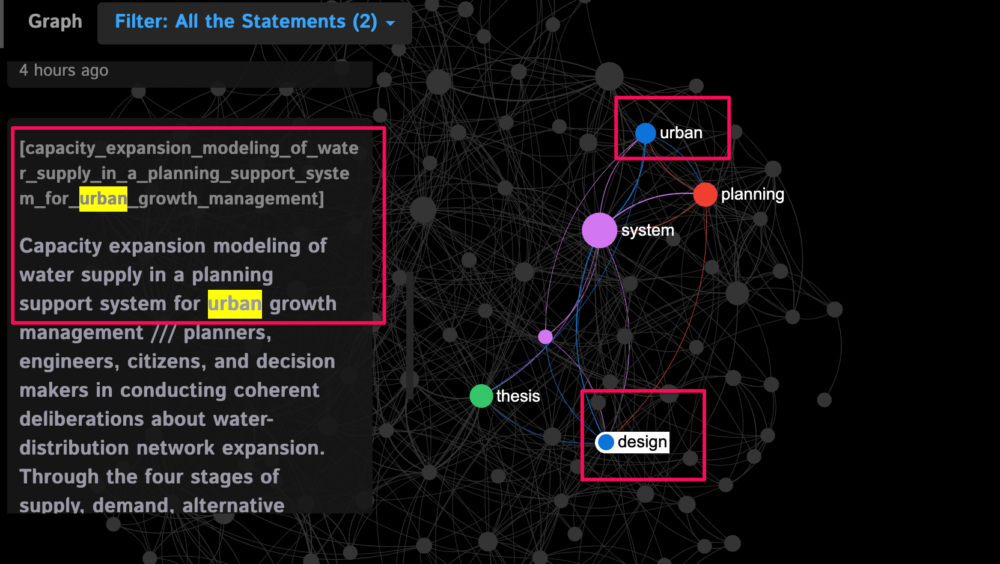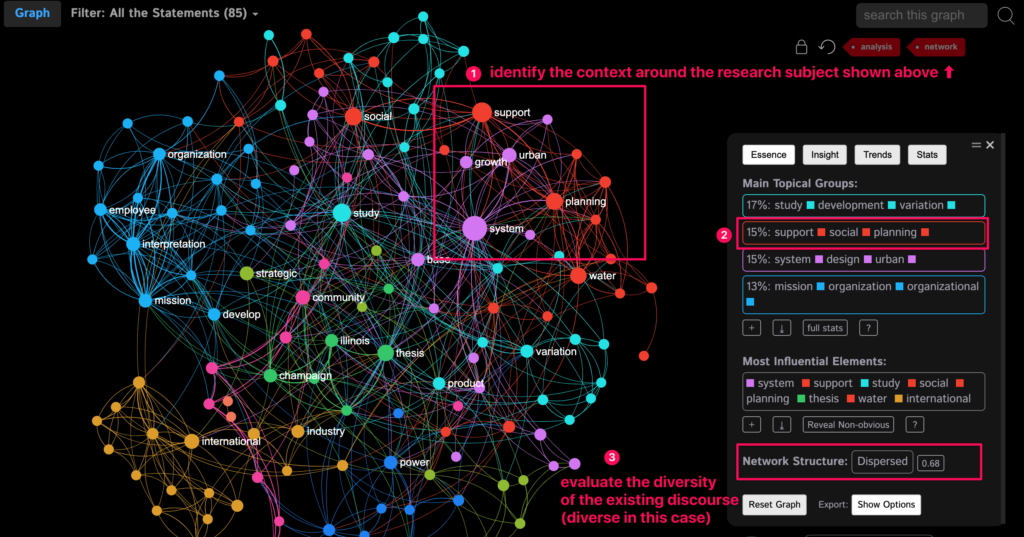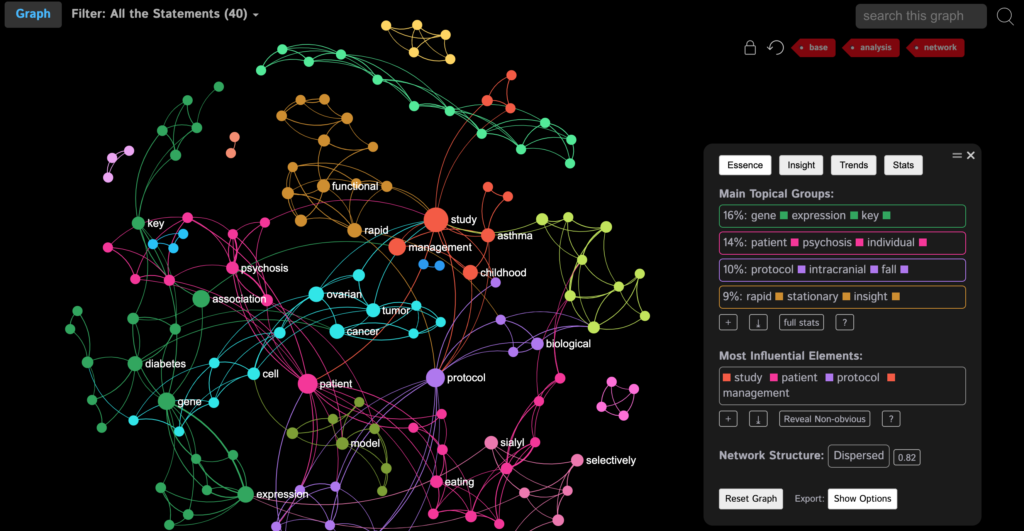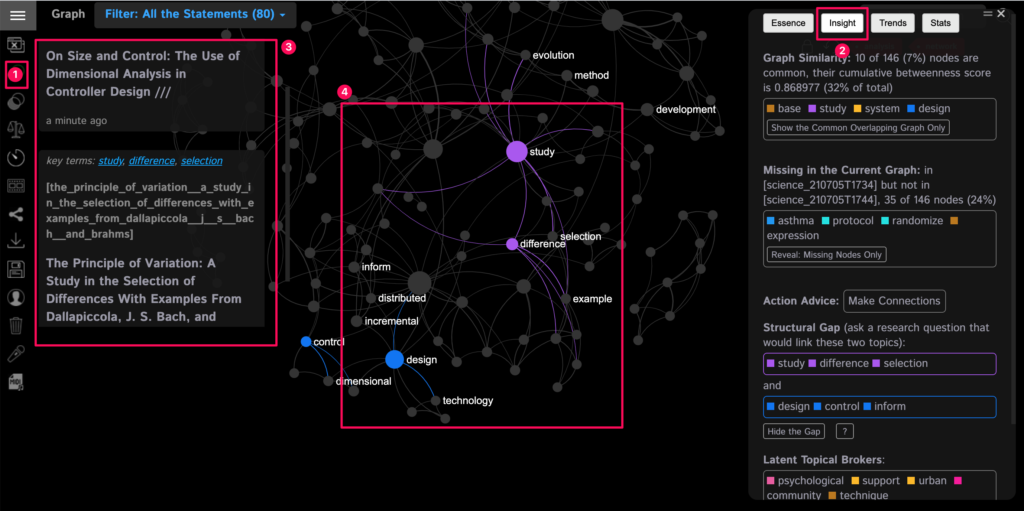Posted by Nodus Labs | July 5, 2021
Literature Review Examples using Network Visualization

A literature review is an overview of the current research on a certain topic. As the number of scientific publications grows exponentially it becomes more and more challenging to perform this sort of analysis. However, literature review can be made much easier using network analysis.
The basic idea of the approach that we propose in this case study is to visualize the semantic field around a certain topic as a network graph.

The words are represented as the nodes, their co-occurrences as the edges, graph theory algorithms can then be used to then extract the top topical clusters and the most influential words to provide a visual overview of the existing papers on any subject [1].
For example, on the image above, we performed text visualization and analysis for the search query “network analysis” using the Core.Ac.Uk database of the open-access papers, extracting the titles and the abstracts of the papers and then visualizing them as a graph.
We remove the search terms from the graph to see what is the context around the topic (those are indicated with distinct color on the graph and are also shown in the analytics panel):
study • development • variation
support • social • planning
system • design • urban
mission • organization • organizational
Here we can quickly see what the main topics related to network analysis in research are: education, system design, urban planning, management. We can then click on some of the terms we find interesting to see which papers they are referring to and explore the concepts around this topic.
For instance, for urban planning:

If we then want to explore more about urban design, we can add the results for this search query into the graph and reveal more about this aspect of network analysis.
Of course, this visual overview of the existing discourse does not replace literature analysis, but it can be very helpful in getting a general idea about the subject you’re interested in and finding some interesting relations and non-obvious topics related to your original study that you wouldn’t think of before.
Types of Literature Review in Research
While there is not a specific taxonomy that is generally accepted, there are 5 main types of literature review:
- Systematic review
- Integrative review
- Narrative (historical) review
- Argumentative review
- Methodological review
- Theoretical review
Systematic review involves data analysis to formulate or develop a research question based on the existing evidence.
Integrative review is similar to the systematic one, but usually it will be focused on integrating several research findings in a way that new ideas can generated.
Narrative review will often look at the way the narrative evolved over time, from a historical perspective.
Argumentative review will seek to support or refute a hypothesis.
Methodological review will be focused more on how the research has been done rather than the actual findings.
Theoretical review helps understand a discourse around a certain topics and find the the existing and the new connections between them.
Text network analysis approach that we demonstrated above, can be very useful for some types of literature review.
For instance, it is definitely very useful for theoretical, argumentative, and integrative reviews where you need to discover what has been written and to analyze the connections between the diverse findings on a certain subject.
Identifying the Structural Gaps in the Discourse
When performing literature analysis, it is important to work with several sources. InfraNodus offers by default the access to Pubmed and Open Access papers. You can also copy and paste the search results from Google Scholar to add them to the analysis. For instance, here’s a visualization of the existing discourse on network analysis from the PubMed database. It’s different from the results we got from the Core.Ac.Uk database, as PubMed is serving the results related to biology and life sciences:

As we can see, the range of topics is different, in this case. We are looking at “gene expression”, “psychosis”, “ovarian tumor” and so on, revealing the different areas of medicine where “network analysis” (our original search term) can be applied.
We can use these findings in our literature review to demonstrate a wide range of possible applications for network analysis (from urban planning and systems design to genetic studies and medicine).
Now, we can combine the two graphs into one and then use the Insight Generation feature, which identifies a structural gap in the common discourse, indicating the novel research questions we could be asking in relation to the subject:

2. click the Analytics > Insight panel to see the structural gap
3. you will see the two research papers that deal with completely different topics but could be somehow connected to produce a novel idea
4. the structural gap is indicated on the InfraNodus text graph
In this particular case, we can see that the system proposes us to link the research on dimensional analysis in controller design with a study that used network analysis to study variation in music. A seemingly unrelated connection, which, in fact may lead to a new invention: e.g. a synthesizer or an analysis methodology.
References
Paranyushkin, D (2019). Infranodus: Generating Insight using Text Network Analysis. The World Wide Web Conference, pages 3584–3589 https://doi.org/10.1145/3308558.3314123
If you would like to try the approach demonstrated in this case study, please, try our text analysis tool InfraNodus and check out our tutorial on analyzing the scientific discourse.

